NEWS FROM THE MEADOWS - 3. June 2021
It was early in the morning ...
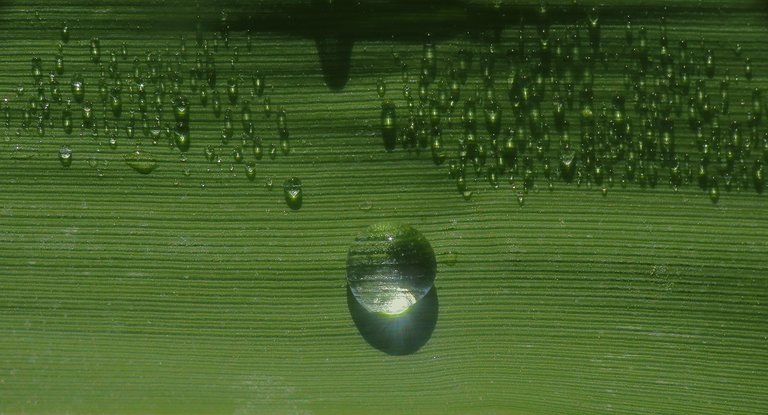
... the dew was still present in sheltered places along the border of the meadow, where taller vegetation, shrubs, reeds and a few small shrub - like trees, grow. The small droplets were the star of the show at this point. On various surfaces the water formed different kind of jewels. Here you can see one pretty big sphere in the center of the long leaf of the reed, and a multitude of tiny droplets near the edge. On the following, enlargeable photograph ...
... the colorful surroundings with many flowers are reflected in the small pearls on the clover leaf ...
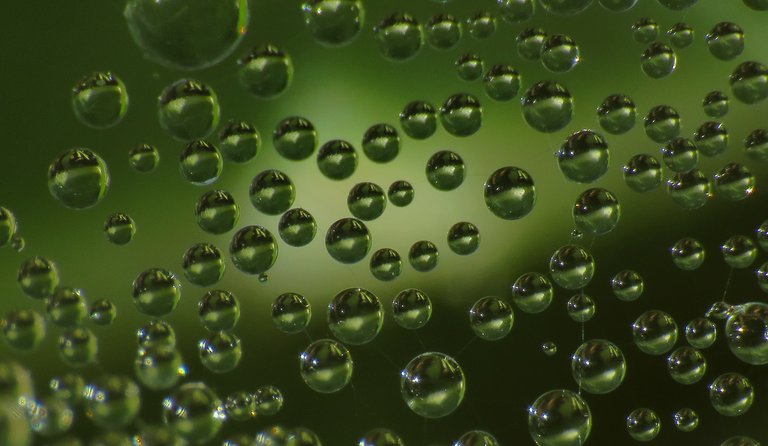
... and here ... it seems that the minuscule droplets are floating in the space like bubbles in some liquid ...
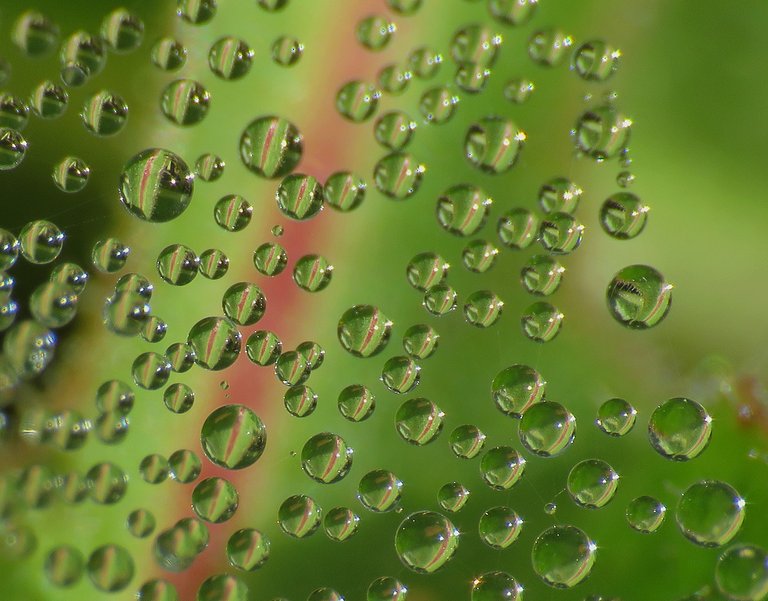
... but they are actually attached to the delicate, horizontal web made by some spider ... the angle from which the shot was taken and the shallow depth of field made the silky threads invisible.

With this shot the focus is back on reeds ...
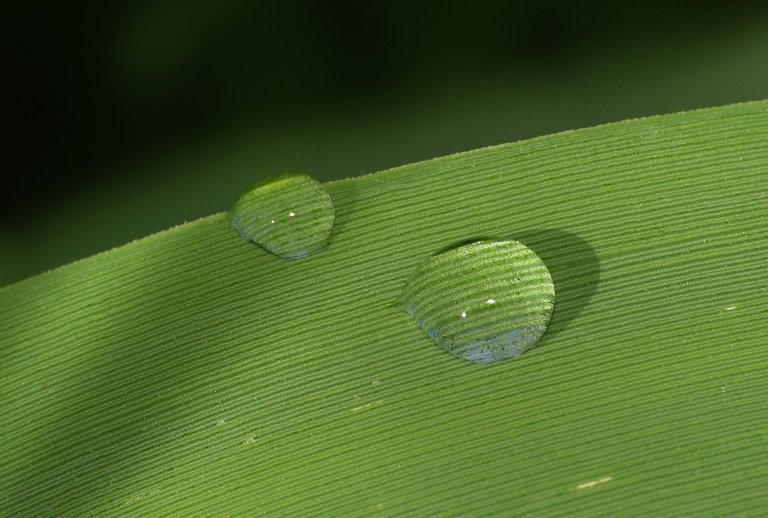
... on these leaves the droplets are sparse and, mostly, relatively big ...
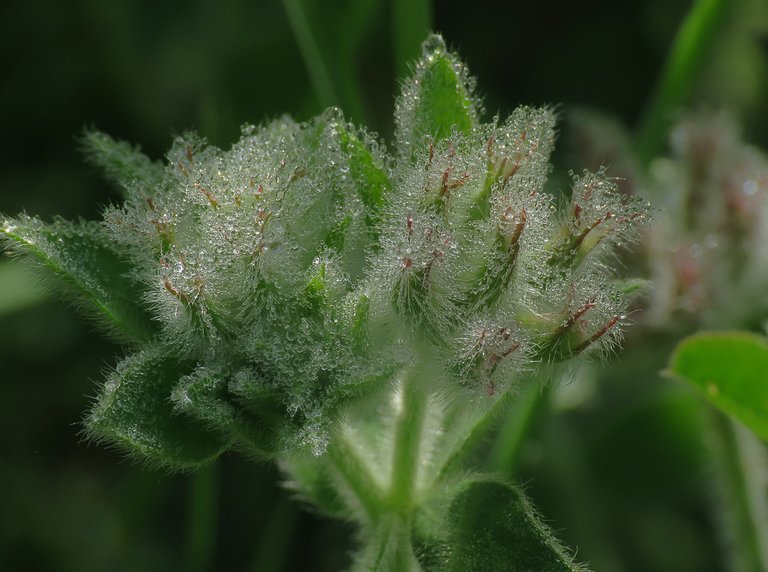
... while on the hairy surfaces of the Canary clover (Lotus hirsutus) ...

... the water gets arranged in a very different way, with many minuscule droplets ...

... that look a bit like frost crystals when seen from a distance.
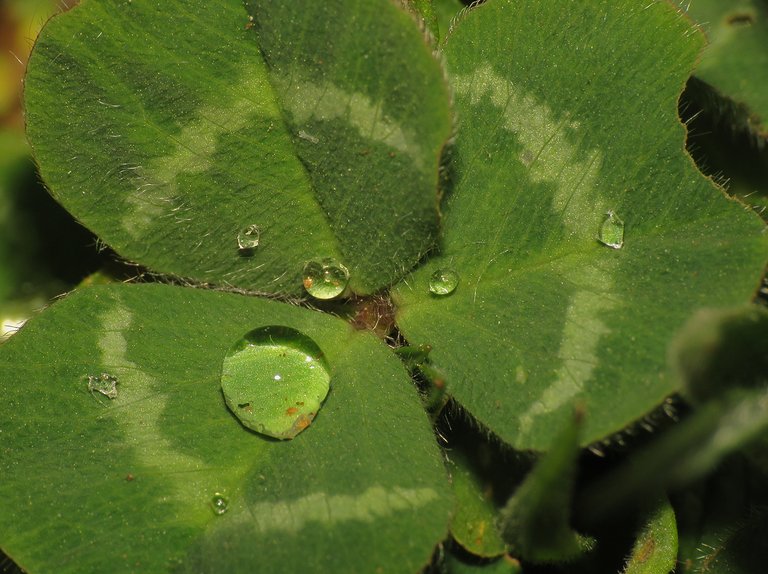
On the leaf of the White clover (Trifolium repens) ...
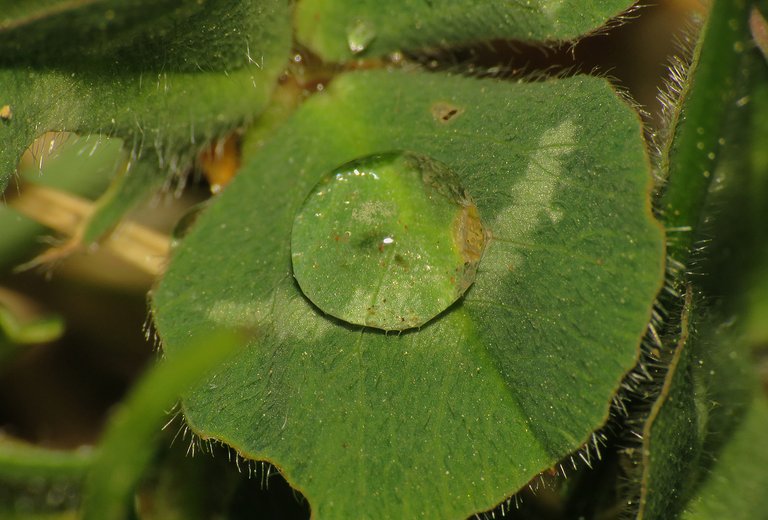
... I found a very special droplet ...
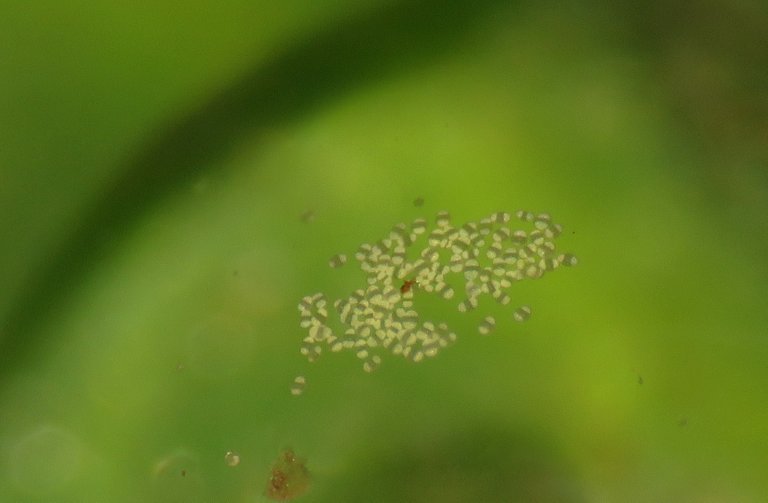
... with some minuscule things ... some kind of grains ... caught in its upper surface ... I don't know what this stuff is ... maybe some kind of pollen ... if someone knows, or has a theory about it - I would be happy to read it.
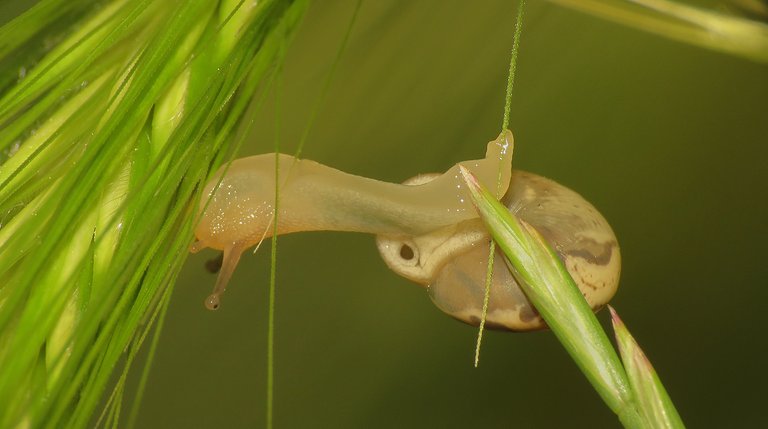
With all that water scattered around the vegetation, the small Hygromia cinctella snails were still active under the sun that was getting stronger fast ...
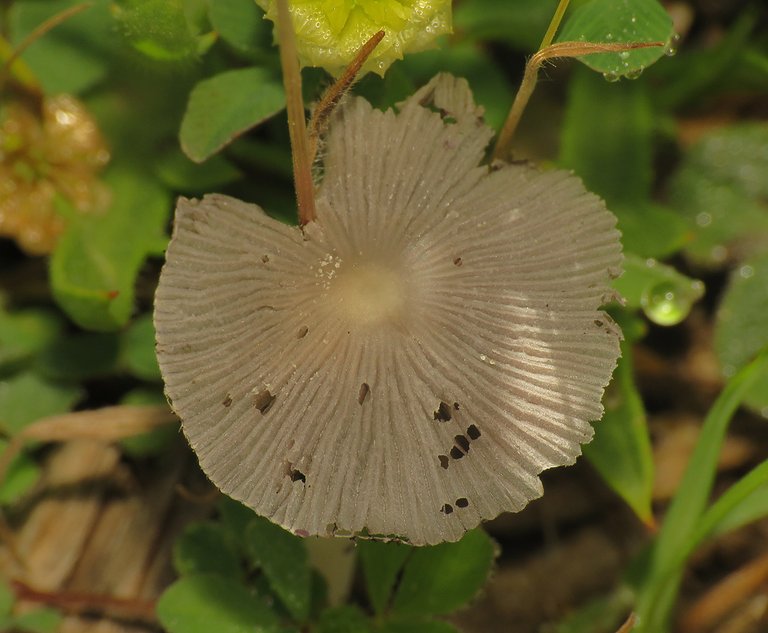
... and I found a small Inkcap mushroom ...
... that grew among the clover and plantago leaves, down on the ground, under the taller grasses. Parasola plicatilis is the name of this Inkcap species.

Minuscule springtails also like this early morning humidity, and are feeding on the foliage. Here you can see the Sminthurus viridis springtail.
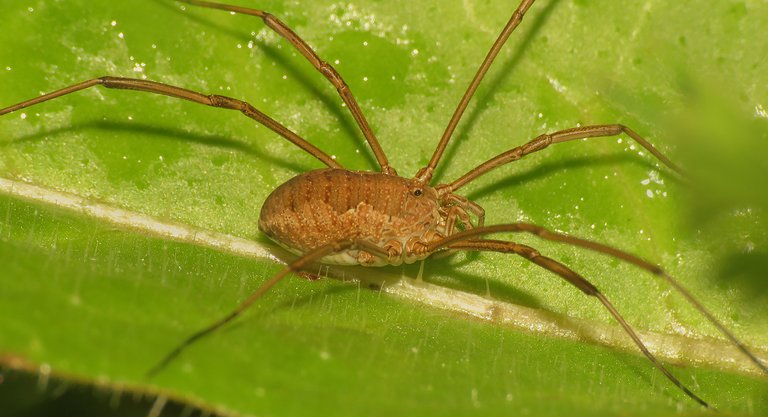
The Phalangium opilio harvestman was resting on some large leaf while the water was rapidly evaporating all around him.
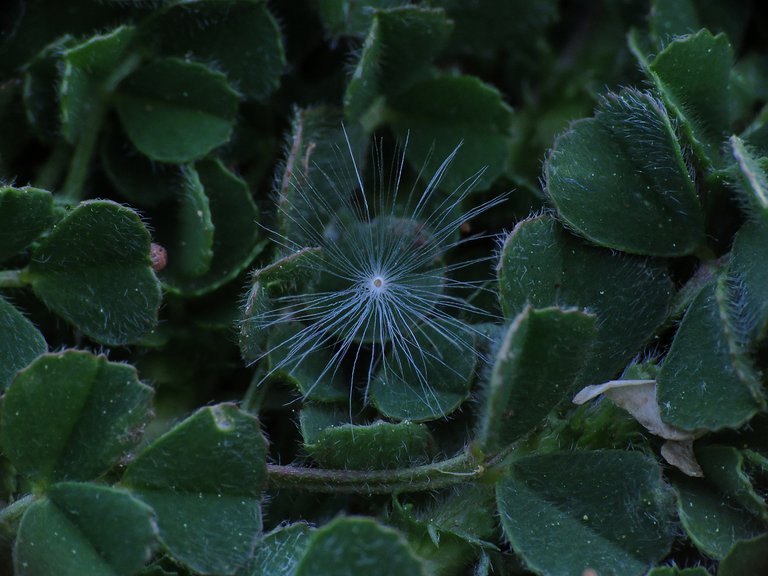
About an hour later, the leaves were dry even in the shade.
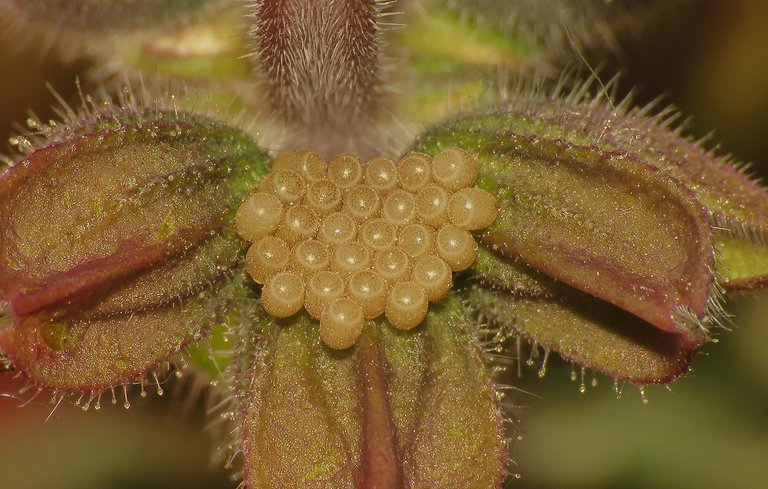
On some hairy plant along the way, I found the eggs of some shield bug ... maybe the Dolycoris baccarum ... or Carpocoris purpureipennis ... or some other species with the same or similar - looking eggs. I sat down to comfortably take this photograph, and then when the shot was taken, while still sitting in the same place, I took a look at the surrounding plants ...

... it seemed that not much is going on at first sight ... but more I was looking and with more concentration on the small details, I started noticing some small green bugs, well camouflaged on the green leaves. On this photograph you can see the wingless nymph of some bug, probably from the Miridae family, I'm not sure about the exact species.
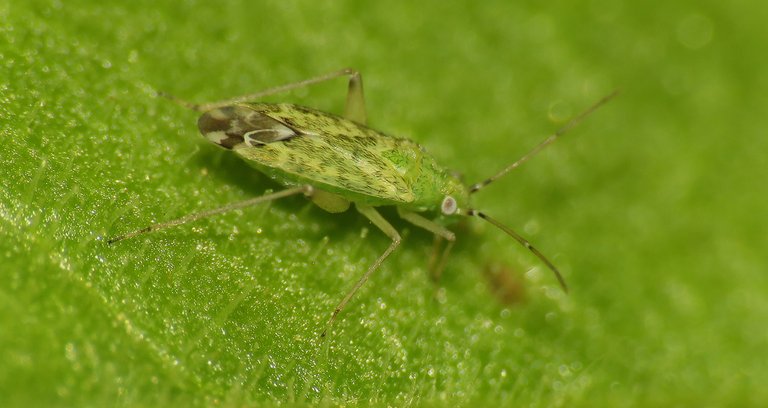
On another leaf of the same plant ...
... I found these adult Macrotylus paykulli, also from the Miridae family ... so, there is a good chance that the nymph you saw a few photographs before is the young, not completely developed version of this species ... but I'm far from being sure about that.

Macrotylus paykulli are small and practically invisible on these leaves, covered with dense short hairs.
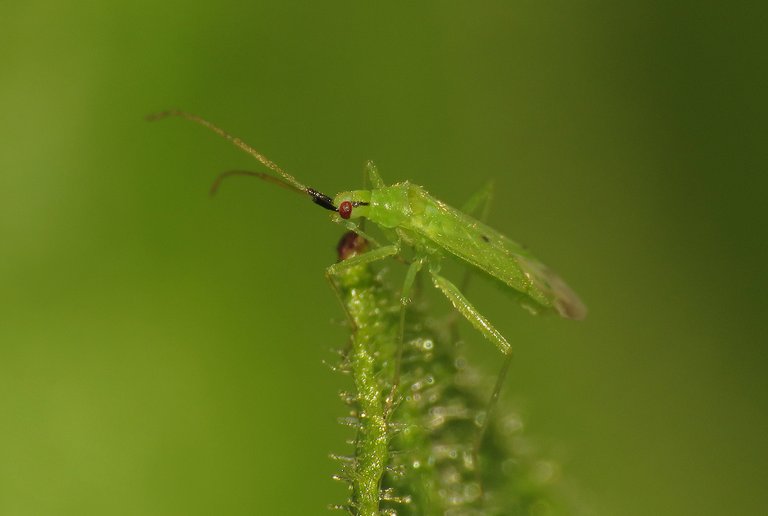
Here you can see another small Miridae species photographed on the same hairy plant. This is the Macrolophus pygmaeus. While the aforementioned Macrotylus paykulli feeds on plant's sap, the Macrolophus pygmaeus it's a minuscule predator that feeds on mites, whiteflies, thrips, aphids and eggs of some butterfly species. After taking this shot, while still sitting ...
... I saw another interesting Miridae ... on the top of the grass above me.
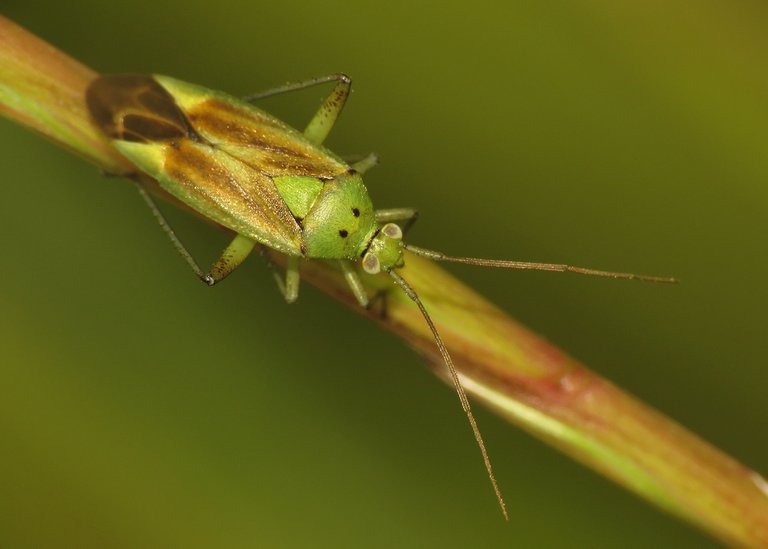
This is the Closterotomus norwegicus, a species that feeds on sap of various wild and cultivated plants. I had to stand up to take this shot.

A few steps further, also high on the top of the grass ...
... I found an interesting Miridae nymph ... but I can't tell you the exact species ... yet.
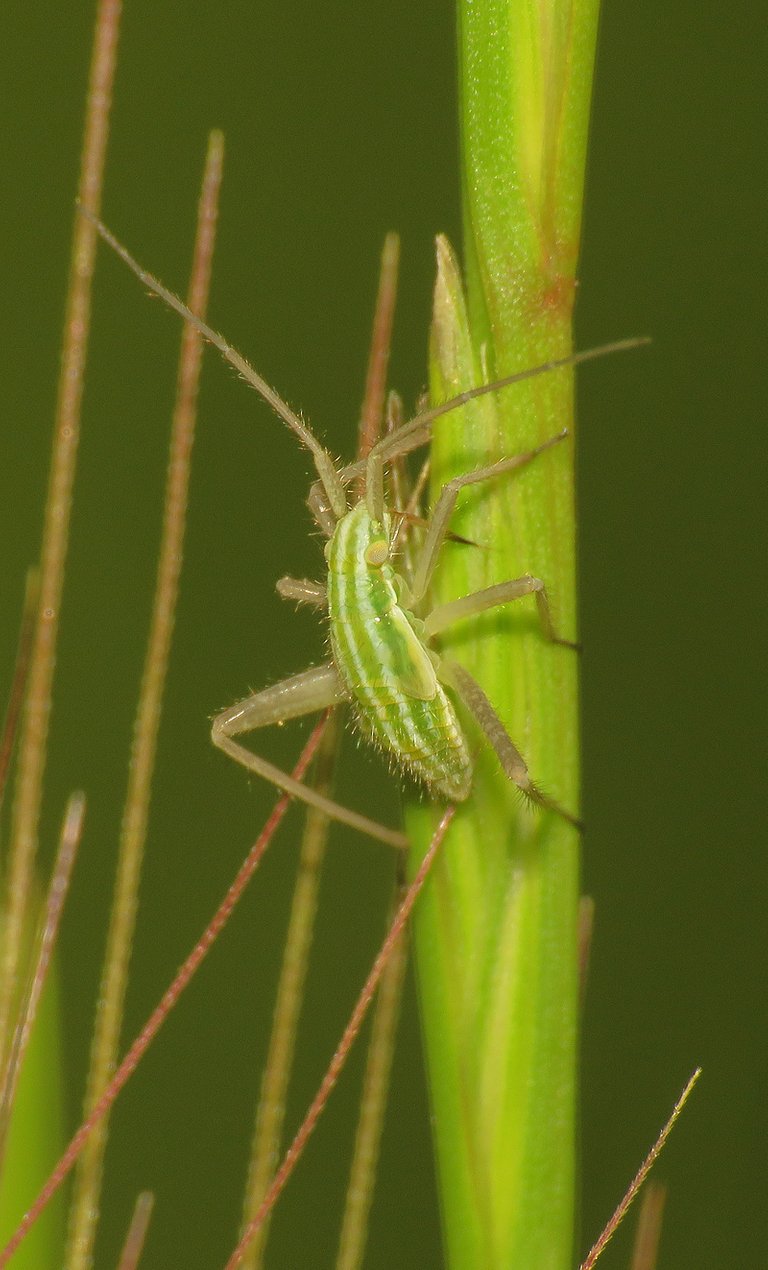
Never saw this version with green and white stripes.
These interesting, elongated ...
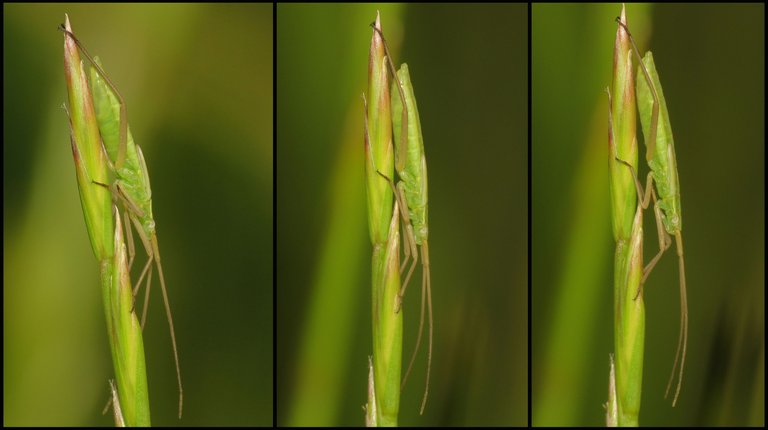
... and very well camouflaged nymphs ... were photographed nearby.
These are the nymphs of some Stenodema species ... I don't know the exact species ... quite a few similar - looking bugs from this genus are present in the area. Stenodema is a genus in the Miridae family.
Both adults and nymphs of the Stenodema bugs in this area feed on unripe grains of various grasses.
On the ear of the Hordeum murinum grass I photographed another well hidden bug. The Aelia acuminata shield bug ... Pentatomidae family.

Not far from there I photographed this spider from the Oxyopidae (Lynx Spiders) family ...
... the Oxyopes heterophthalmus ...
... a species that I often encounter in its brown variation, but very rarely in this black & brown version.
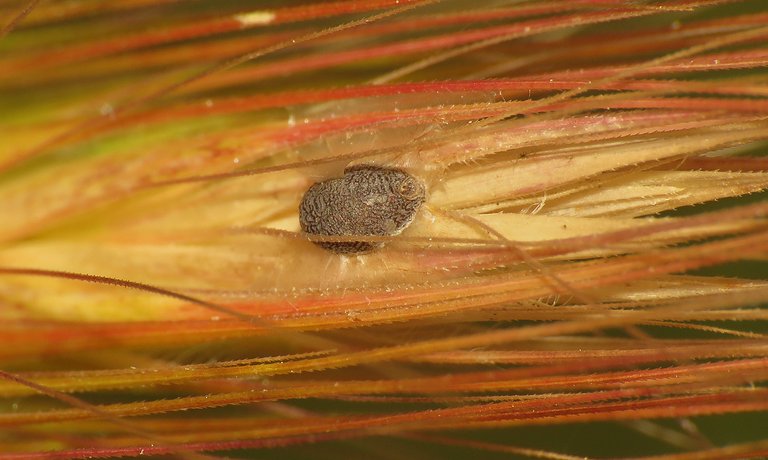
On another, more mature - less green Hordeum murinum plant, I found a mysterious little something ... I have no idea about what this thing could be.
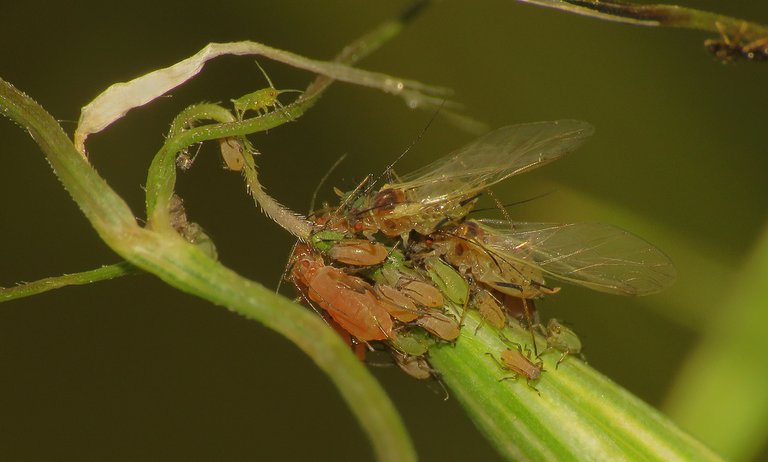
On the Avena fatua grass, I photographed a nice mix of green, orange, winged and wingless Sitobion avenae aphids.
On this triptych you can see two different leafhoppers resting on the same stem of grass. On the photograph in the middle, the Errastunus ocellaris is higher on the green straw, and the Emelyanoviana mollicula is underneath.
The larva of the Zygaena filipendulae moth was photographed a few minutes later ... and then ...
... on the top of the Plantago lanceolata plant ...
... I came across the camouflaged mating pair ...
... of Tropinota squalida beetles.
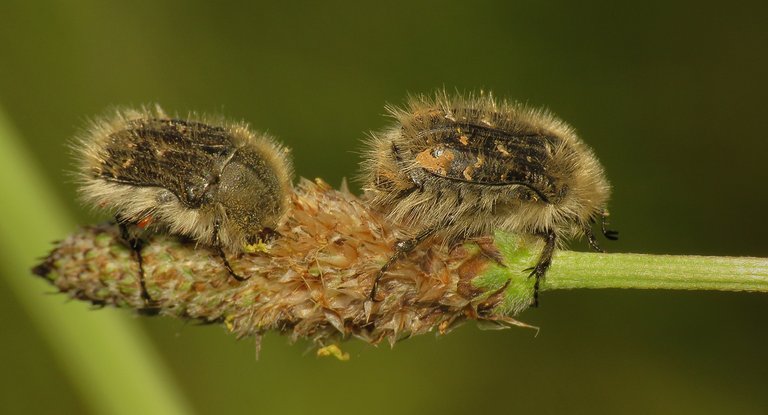
The larvae of this hairy species feed on decaying plant material, while the adults feed on pollen of various flowers.
In the same place, less than a meter from the Tropinota squalida ...
... among the colorful flowers of the Vicia benghalensis plant ...

... I photographed a similar looking beetle, the Oxythyrea funesta ...
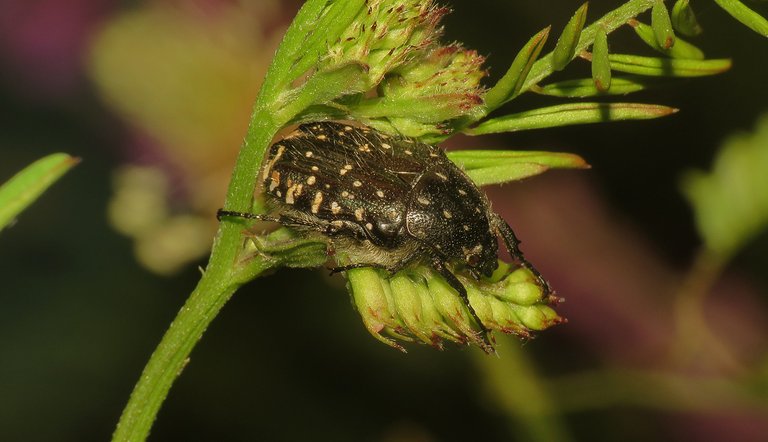
... that in its adult form feeds on pollen, petals and soft fresh buds of various flowers ... especially the wild roses.
After taking a few more shots of these gorgeous purple clusters ...
... I went home to prepare this post - THE END.
As always in these posts on HIVE, the photographs are my work ... and as always in this NEWS FROM THE MEADOWS SERIES, they were all taken today.
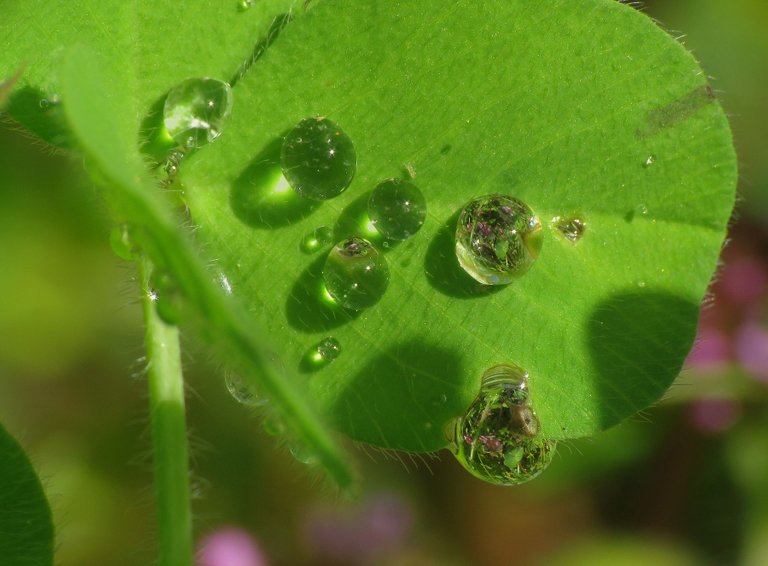
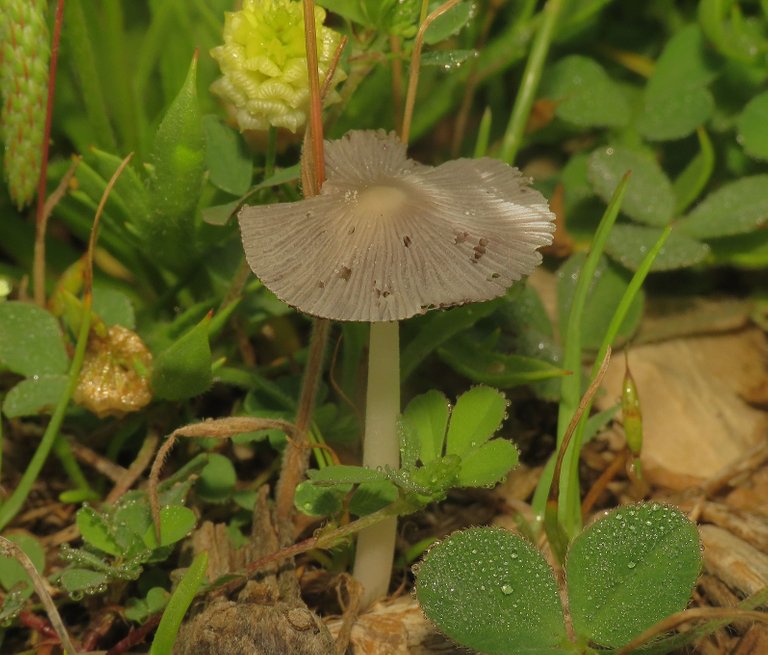

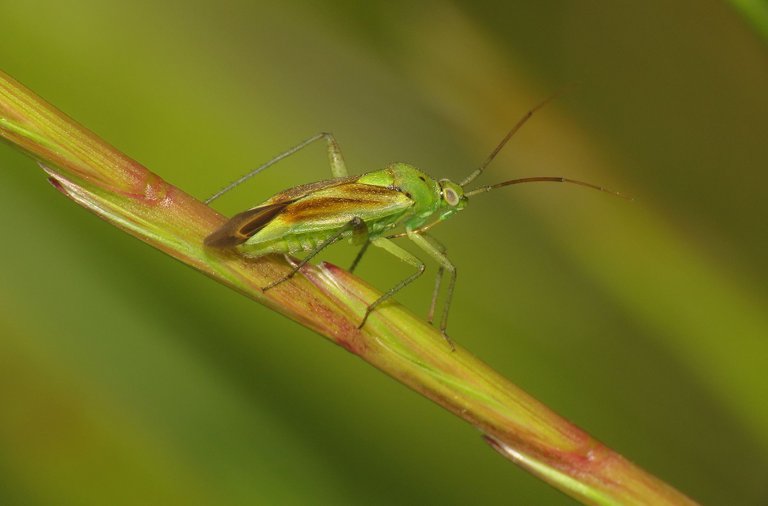
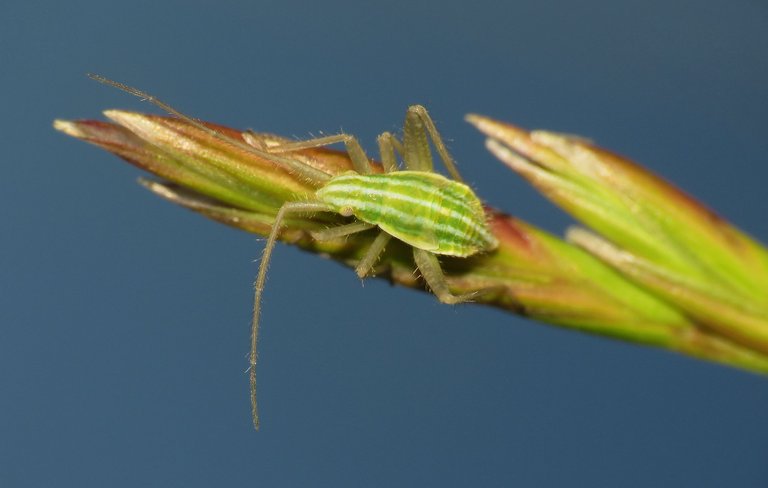
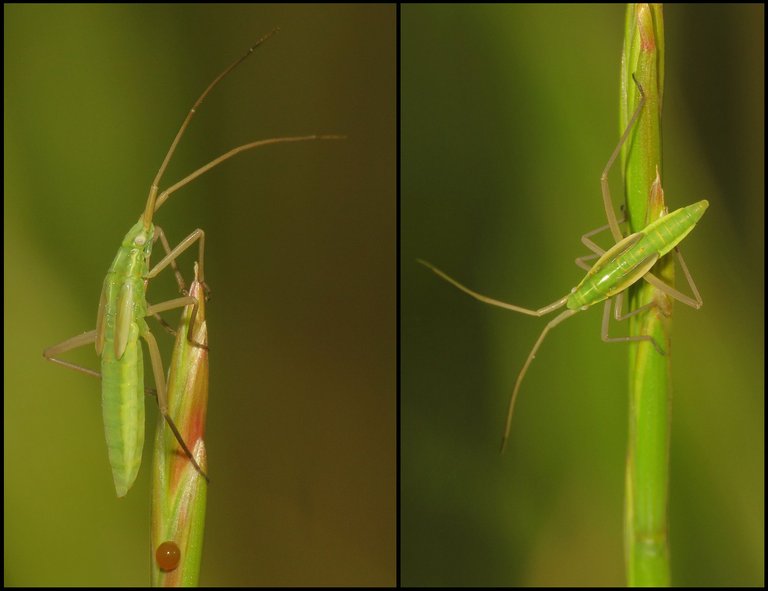




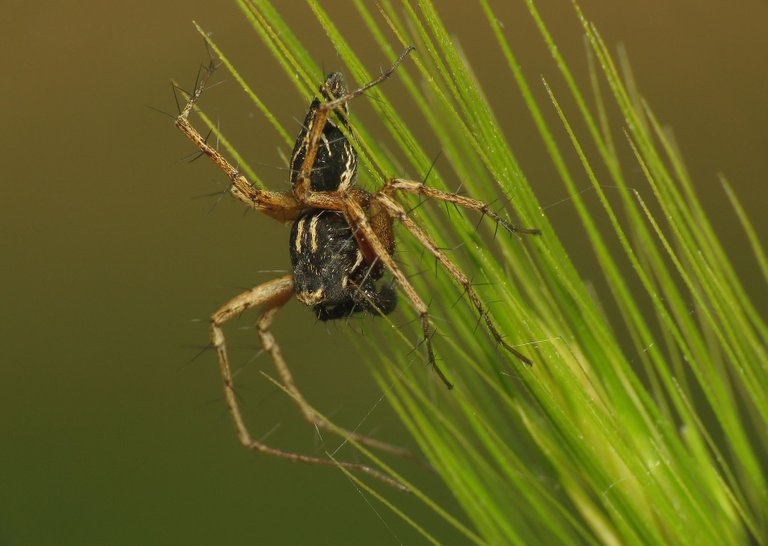
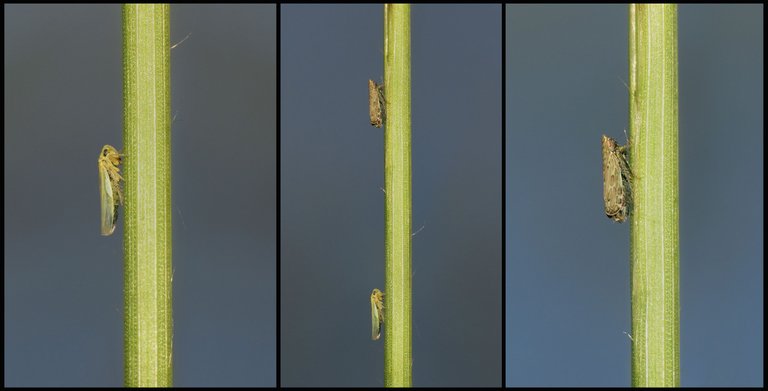








I always enjoy your news from the meadows. So many beautiful plants, insects, arachnids. The droplets, one of my favourite subjects; and the "floating" ones are so beautiful.
Thanks. :) Being out in the nature and photographing for this series is my favorite pastime ... glad you like these reports from the meadows in my area.
Hlo friend, I loved the pictures and How delightfully you captured the details, excellent work dear. It's excellent work, you have outdone yourself, keep it up. It must have felt amazing to experience this beauty of nature so closely. 😊👍🙏
Thank you for another portion of beauty !!! The dew looks like real diamonds and pearls, and the photos of the insects made me feel like they were truly intelligent beings.
Love the droplets, especially the web (less) ones!
Water can create some real jewels :)
That might be one of the most extensive photography shoots I've seen here. That was nice, thank you.
Thanks :) Glad you like this photo report from my area.
Interesting insect of rhe medow ;))
Stunning!! What camera and lens did you use?
Hi, I'm using the Canon PowerShot SX60 HS camera ... and Raynox DCR-250 Super Macro Snap-On Lens
So many fascinating tiny little camouflaged creatures. I really like the water droplets on the spiderweb. It was hard for me to notice the web, making it feel like a suspended universe. Love the macro shots. !LUV 1
Droplets are great fun to photograph, :) they look cool and don run from the camera.
@borjan, you were given LUV from @justinparke. About: https://peakd.com/@luvshares